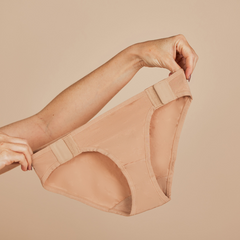Welcome to our friendly guide on how to be an ally during Disability Pride Month! This special month is an opportunity to celebrate the achievements, strengths, and unique perspectives of individuals with disabilities. It's a chance to promote awareness, understanding, and most importantly, inclusivity.
Being an ally isn't just about the duration of this month; it's about making a lasting commitment to create a world that's accessible and equitable for all. In this blog, we'll explore practical strategies and actionable steps that will help you become a strong and supportive ally, not only during Disability Pride Month but throughout the year.
That way, we can build a community that values and empowers every individual, regardless of their abilities.

What is disability pride month?
Disability Pride Month began as a heartfelt celebration rooted in the larger Disability Rights Movement. Back in the 1960s and 1970s, advocates fought for equal rights and opportunities for individuals with disabilities, standing up against discrimination and championing inclusion.
As such, Disability Pride Month is a dedicated period that takes place annually to celebrate and honor the experiences, achievements, and diversity within the disability community. It is a time to raise awareness, promote acceptance, and challenge the stigmas and barriers that individuals with disabilities face on a daily basis.
Is July disability pride month?
Yes! While the exact origins of Disability Pride Month can vary, it's often tied to an important milestone: the signing of the Americans with Disabilities Act (ADA) on July 26, 1990, in the United States.
The ADA was the first piece of legislation to safeguard the rights of people with disabilities, ensuring they have equal access to public spaces, employment, transportation, and more. Since then, Disability Pride Month has spread worldwide, typically celebrated in July.
Top Tips on Being an Ally During Disability Pride
Amplify the voices of disabled activists
- There are many activists in the disabled communities who have perspectives that need to be shared more widely. They, as members of the community, understand their own needs and those of the community, so it’s important for people to listen. Amplify their voices by sharing their content and always providing credit for their work.
- Make sure not to speak over disabled people on the internet or in your life. Trust their experience and perspective, especially if you yourself are not disabled. While one person’s experience may not represent the whole community, it is still a valid experience, so please treat it as such.
Use the word “disabled” as it’s not a bad word
- Language matters. It shapes perception and can affect how people view the disabled community. The word disabled is not offensive nor a bad word. Feel free to use it when referring to disability. Trying to sugar coat will do more harm than good.
- Ask a person about how they identify – they won’t be upset. Not everyone identifies as a “disabled individual.” Some people may prefer “a person with a disability.” Or, they may not identify as a disabled individual at all. Asking is always the safest way forward.
- Avoid using outdated and stigmatizing language, such as “differently-abled,” “handicapped,” or “special needs.” You may have grown up with these phrases, but it’s time to unlearn them.
Don’t assume all disabilities are visible
- Many disabilities are invisible. They may be neurological, cognitive, autoimmune, etc. Just because you can’t see a disability doesn’t mean that it’s not there. Believe a person when they tell you they have a disability.
- Wheelchair users may also be able to walk – this doesn’t mean they are lying. Wheelchairs are used by many individuals who struggle with muscle weakness, pain, or who are unable to stand up for long periods of time.
Educate yourself on the disability community and identities
- The best book for this is Emily Ladau’s Demystifying Disability. It’s an easy read with lots of tactical information on how to be a better ally moving forward. We all were raised with various ableist beliefs and it’s never too late to unlearn those ways of thinking.
Don’t patronize or infantilize disabled individuals
- Disabled individuals, once past the childhood stage, are adults. Treat them as such. They can make their own decisions and more often than not, they live independently. This applies whether the individual has a learning, physical, or intellectual disability.
- Similarly, disabled people can and will get married, have children, etc. They deserve the same rights to life as able-bodied people and they have the agency to choose what to do.
Respect that disabled individuals can have multiple identities
- Individuals may be disabled AND many other things. Just like everyone, people with disabilities carry multiple identities across race, ethnicity, gender, sexuality, etc.
- Sexual and romantic identities are equally prevalent within the disabled community. Don’t assume that someone who is disabled is also asexual. Some people may be, but most are not, and they often have thriving romantic and sexual lives.




